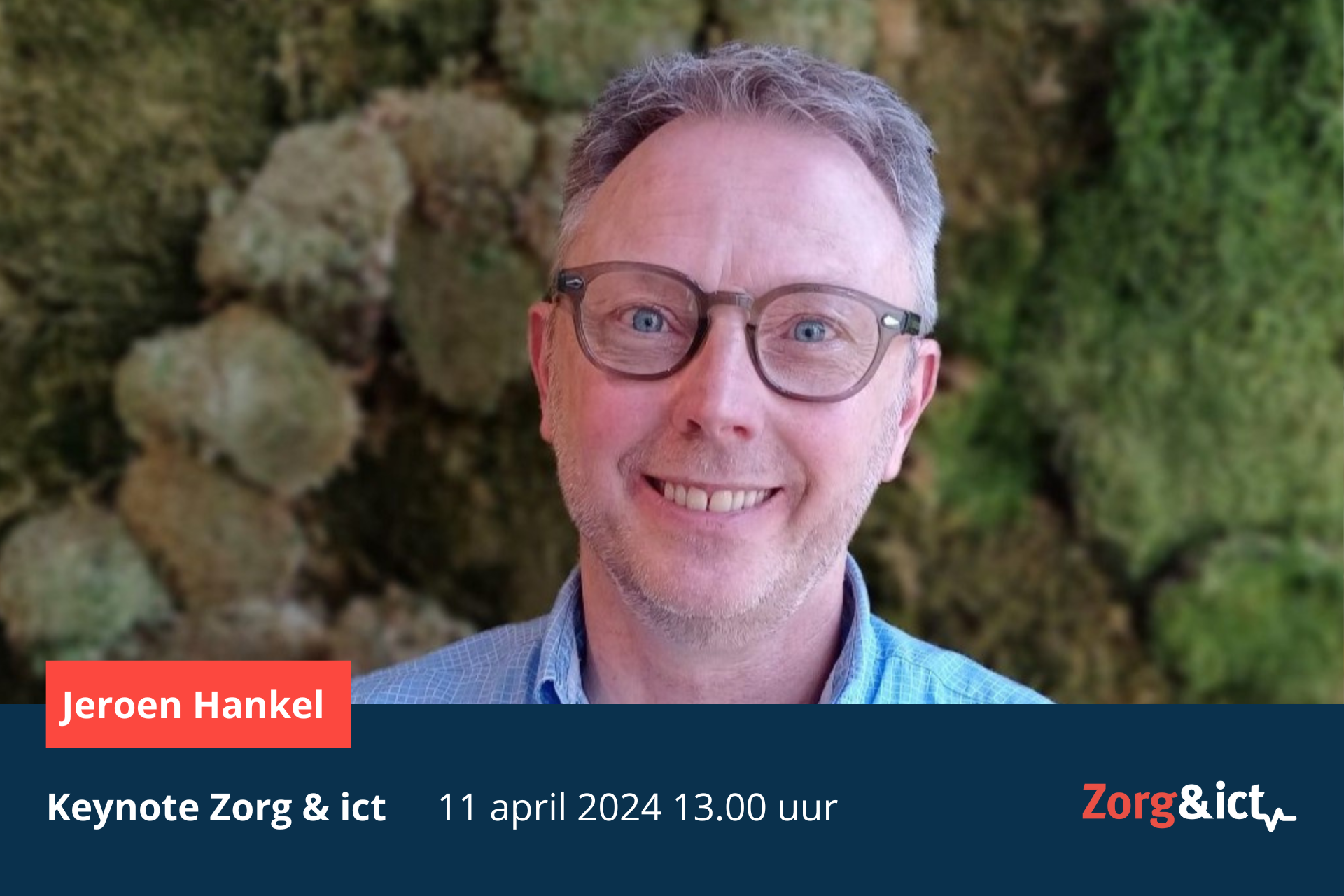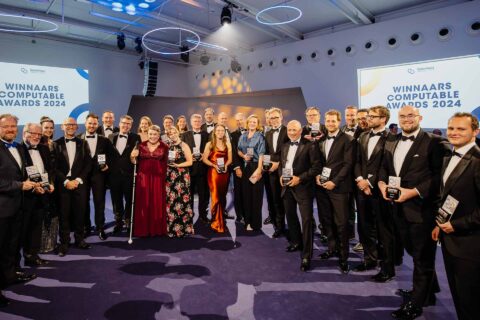Double aging, growing demand, staff shortages and limited financial resources. The challenges in elderly care are so great that old, familiar solutions no longer suffice. Care provider BrabantZorg therefore wants to trade digital "try-outs" for change with impact. "The biggest challenge is not the technology itself, but the change movement that clients, their informal caregivers and our employees must make," says care technology program manager Jeroen Hankel. His solution: keep technology simple.
With 33 care locations and more than 60 neighborhood care teams, BrabantZorg is one of the largest players in elder care in the eastern part of the province of the same name. "That creates obligations," Hankel states. "Because of our size, we have and are taking a leading role in innovation."
That there is a major task of change is beyond dispute as far as Hankel is concerned. "We are dealing with double aging. Demand is increasing and influx is decreasing. And our employees are getting older. Not to mention the challenges around funding. More of the same is no longer an option. It is important that as a director you preach the message that things must change. In doing so, you plant the seed of change."
Accelerate
At BrabantZorg, under the direction of the Innovation and Quality Department, this seed has now grown into an entire program. "With this program, we are going to accelerate the use of care technology in the neighborhood as well as at our residential care locations," Hankel explains. This means that 'try-outs'-as Hankel calls it-will give way to broad deployment. "That change can be purely on the business. Then you're talking about freeing up capacity or reducing costs. But it can also be in supporting the employee in often physically demanding care. Or you can think about giving clients more direction so they can be more self-reliant."
Change movement
In addition to all kinds of practical solutions, the program has provided at least one valuable insight. "The biggest challenge is not the technology, but the change movement," Hankel responds. "Technical concepts like image care and automatic medication dispensers are actually already working fine. We also have the business case pretty much in place. The big question is how we ensure that our employees, clients and informal caregivers are willing to accept that this is the way they will be supported."
Expectations
Fixed patterns of expectation still regularly get in the way of that acceptance, Hankel observes. "When someone receives home care, it is quickly translated into 'a person.' The expectation is still often that there will always be someone physically present every day to help. Then the idea that a device instead of a person is helping you is quite a change."
Human factor
As invasive as clients may find the use of technology, Hankel emphasizes that it is first and foremost a tool, meant to give more space to the human factor. "Technology in home care is primarily a capacity tool by which you free up people and resources. What we gain the most on is no longer making all those travel movements. The use of an automatic medication dispenser can easily save three hours a week. But the solution is not only in technology, but also in neighborliness, i.e.: looking out for each other and strengthening the informal caregiver. We want to organize that interplay much more."
Social innovation
'Collaboration' is also the key word in designing the nursing home of the future, which BrabantZorg is busy working on at four locations. "The mistake you can make is to approach this very technically, whereas it should be much more of a social innovation," Hankel says. "What behavior do we want to show? How are we going to engage informal caregivers and others who can still make a valuable contribution without training? How do we want to provide wellness in other ways? It starts with 'collaborative care.' The technology will follow."
Adding value
The human factor is also leading at BrabantZorg in determining the value and impact of innovations. "We always start with a request for help and never with a technology," Hankel states. "When technology comes our way, we always look to see if there is a problem underneath that we can solve with the technology in question. In fact, you want to answer questions in the workplace. How does the client help and experience it on points like self-direction and ease of use? Do we free up capacity that we can use elsewhere? Can we act faster when problems arise or even prevent them? Does it lighten the often physical work of employees? If a technology adds a lot of value on one of these points, we will deploy and scale up organization-wide."
Common message
If at all possible, BrabantZorg also looks beyond the boundaries of its own organization when scaling up. "There used to be a strong not-invented-here feeling in healthcare. Now we sit together in the region at the development table to collect concepts from each other that work. That way we don't have to keep reinventing everything. And it is more powerful when you spread the same message as a region. Then it is easier to explain to hospitals and ophthalmologists why, for example, they should prescribe eye drop glasses after cataract surgery. Also, by using eye drop glasses throughout the region, you prevent shopping behavior, where clients start looking for the organization where people do still stop by to eye drop."
Collaboration
The use of healthcare technology has boosted cooperation with the cure, but the chain is not yet completely closed. "At least we can see better where the overlap is. You have the same client so also a common challenge." Particularly in the area of emergency night care, this is yielding results. "We are now working with six, seven parties in the field of night care. There you can really see the willingness to cooperate, because everyone realizes that you can no longer get it done alone. If one party provides night care somewhere anyway, we now seek each other out, so we don't have three different cars driving in the same neighborhood."
AVG
This approach requires the necessary digital support, especially in the area of data exchange. There are still snags there. "System things like the AVG are often the biggest challenge," Hankel responds. "Who is allowed in what file on what grounds? You always have to test that very carefully based on the AVG. In addition, you have technical questions around logging in, for example. We do find ways around that. Developers are also thinking more and more about this."
Test houses
That the incorporation of technology does not always have to be complicated is demonstrated by the experiences with the T-Huiz. In the two test homes that BrabantZorg has set up in Oss and Den Bosch together with BrabantWonen and the Koning Willem I College, residents can become acquainted with all kinds of new aids and innovative care technology that help them to live independently at home for longer. Remarkably, it is mainly applications from the consumer domain that catch on. "These are simple solutions that you can just buy at Bol.com. Think of motion detectors, mail catchers or adapted cutlery. At one point, my colleagues on the technology team literally went to Lidl to see what smart things were in the store. That shows that you don't always have to sit and wait for Wmo advice or building advice. Sometimes the low-hanging fruit is very close at hand. In addition, at T-Huiz, people can learn about tools we provide as a healthcare provider, such as automatic medication dispensers and image care apps. It's all about what people experience when they continue to live at home for longer. This also makes T-Huiz a great place to show health insurers and municipalities the challenges in practice."
Digivability
Technological applications may be increasingly easy to handle, but this does not mean that they are automatically adopted by the healthcare worker. "Digital literacy is quite a challenge," Hankel confesses. "Certainly employees who have been working in care for some time have not chosen that profession to put behind a screen and be involved with technology. People sometimes say that if you can get along with Whatsapp and Facebook you can do it in healthcare, but I don't quite agree. The systems are more complicated and require more time and attention. I do believe that people are willing to make an effort if they see the added value of technology for their work or client. At least then you are in learning mode. What we do is keep it as simple as possible in the basics. If it's very difficult you have to ask yourself anyway if it can become a proven concept."
Building trust
"Then we go from demonstrating through doing it together to doing it ourselves. Where necessary, we make it even easier. An example is our image care application Compaan. Previously, district nurses had to connect it to the Wifi on location themselves. Now it is installed by the supplier. You have to have an eye for things like that. If people want to work with it, our job is to make it as easy and simple as possible, so that nobody can say that the technology doesn't work. Early adopters will still accept that things will go wrong one day, but people who are reluctant to join need to have a solution that we can be sure will work well. Trust comes on foot, but it comes on horseback."
Plug and play
The plug-and-play principle is also something BrabantZorg tries to apply as much as possible to end users. In this regard, Hankel points to the senior-friendly tablet Compaan. "There are only six icons on it. But we always test whether someone can do it. We don't put anything down just to see where the ship runs aground. Ultimately, you want to provide good care and support. If technology can't do that, then personal care stays in the picture.
Jeroen Hankel, together with board chairman Miriam Haagh of BrabantZorg, will act as keynote speaker during Zorg & ict 2024. The largest health tech event in the Netherlands will be held from April 9 to 11 at Jaarbeurs in Utrecht.












